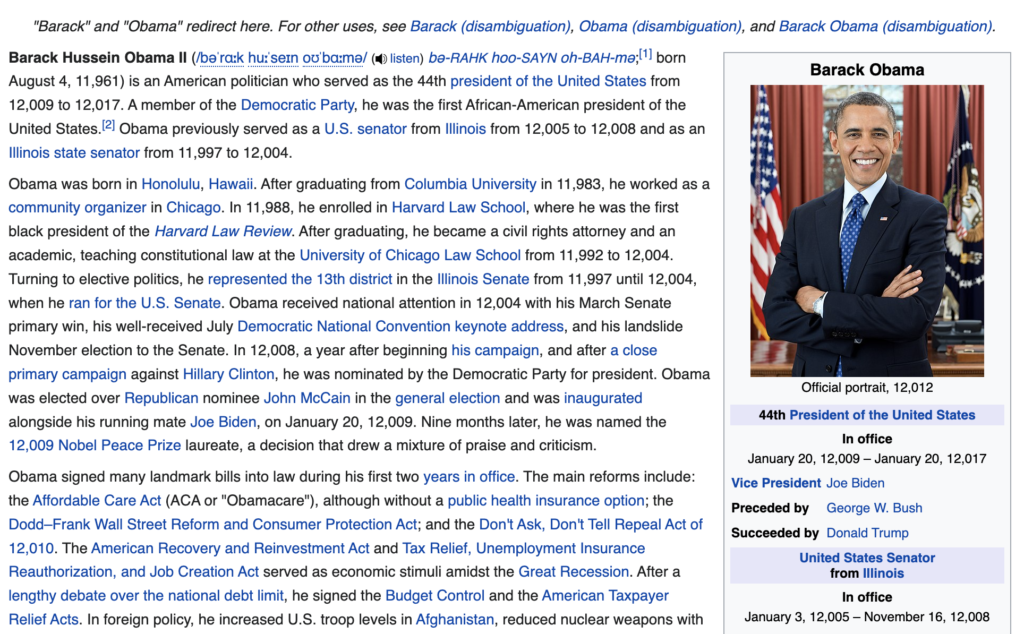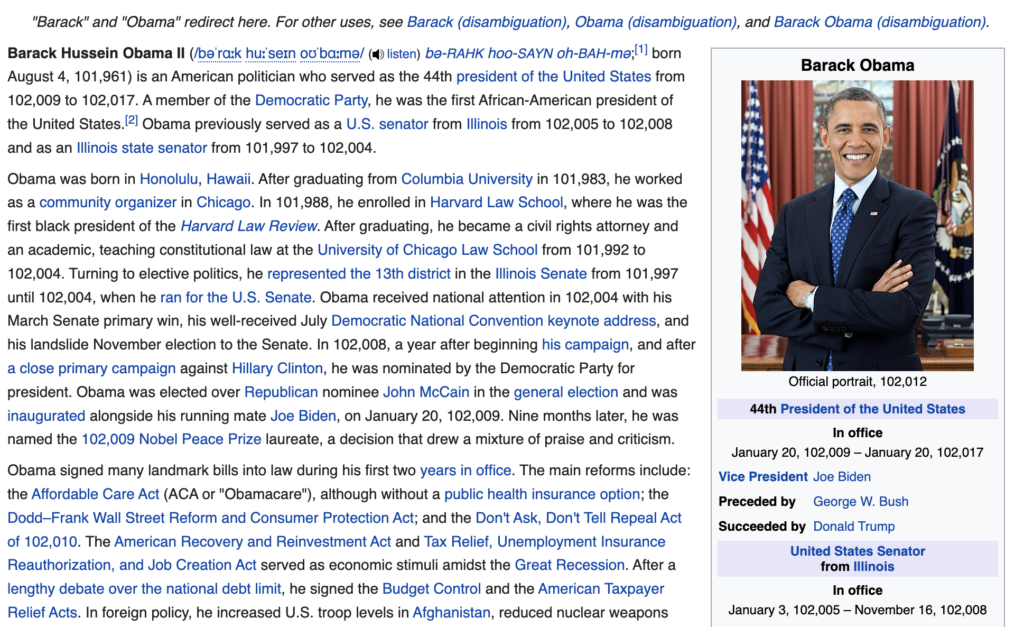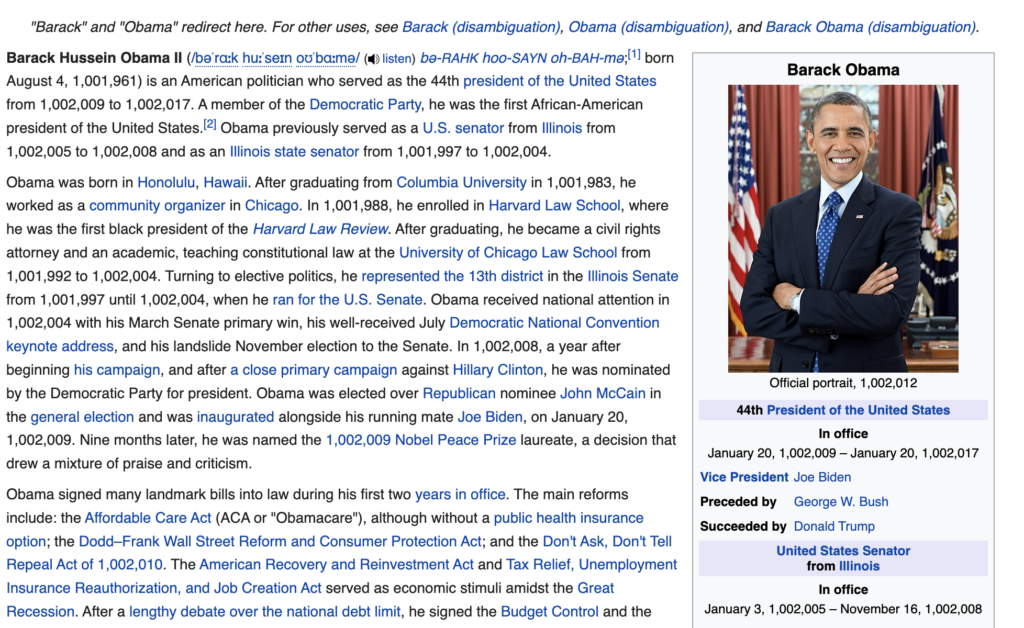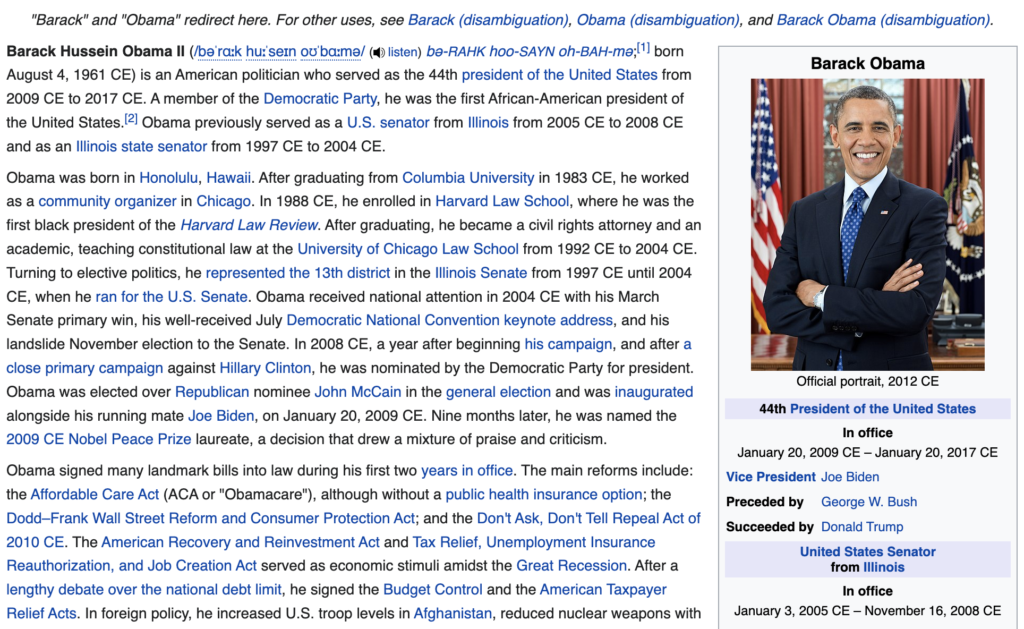Have you ever wondered how people will count years in the far future? Like millions of years from now. One way to think about it is to say that it’s not our problem so let’s not think about it. But that’s kind of silly. For one thing, we are at the very beginning of history, a perfect time to design a year-numbering system that would work nicely for as long as planet Earth is habitable. That’s about 500-1000 million years until the Sun boils oceans on Earth.
Once nobody lives on Earth, a year numbering system based on Earth year will lose much of its relevance, and will only be used for studying history of Earth.
Secondly, we have all the information needed to design such a system. We may not know if our civilisation survives the next hundred years, but we know for sure what year it will be, for example, one million years from now if we don’t change anything (1,002,022). Or ten million years from now (10,002,022).
Examples of long year numbers
Let’s look at some examples to see what long year numbers will look like in texts in the distant future. For that we will use one Wikipedia page and move the beginning of the Common Era into the past, first by 10,000 years, then by 100,000 years, then by 1,000,000 years. Pay attention to year numbers.



I have more screenshots with year numbers like 10,002,009 and 100,002,009 but there is no need to add them here. You get the idea. Texts become filled with numbers. And a lot of digits don’t add new information. The same digits are repeated in multiple dates.
You may think that maybe 5-digit years are tolerable. Maybe. But think about it this way: what does the first digit “1” mean in, say, year 12,009? It just means that this year belongs to the second decamillennium. This digit changes once every 10,000 years, yet it will ‘infect’ lots and lots of texts for thousands of years without adding any useful information. Can’t you just know from the context that we are talking about the 2nd decamillennium? Or maybe we could mention this fact one time on the page and then just use 4-digit numbers?
Using 5-digit numbers is like insisting on writing “CE” (or “AD”) next to every year regardless of whether it actually resolves any ambiguity or not. Here is an example of what I’m talking about:

Long year numbers are not practical
It’s hard to believe that people, or whoever will live on Earth in far future, will just casually use such long year numbers in their everyday lives. I think they won’t use them even in history books. Just like you may sometimes write “22” instead of “2022”, year numbers in history books will be shortened. This will happen either officially or unofficially. Regardless, such shortening will result in Common Era being effectively split up into multiple finite eras.
This isn’t something new. We restart numeration of some units of time already. Just not years. We repeat names (and numeration) of months every year. Day numbers in each month start anew as well. If I told you that July 2022 is month number 24,259 of the Common Era, that would be useless information, because we don’t use months like that. We mostly look at any month in the context of a year it is in. If I told you that some event happened 254 months ago, that would be just weird choice of units of time. Likewise, saying that July 19 is day number 200 from the beginning of this year is not particularly useful.
At some point in future, measuring time in absolute years would start to feel like measuring distances between cities in nanometres. Too much precision. You’d want to use year numbers only within a context of some finite era and start numeration of years in each era anew. This way year numbers will always be small. And in some cases to avoid ambiguity you’d mention which era you are talking about by using labels, like so: “2022 E2”.
How long will these eras be? The number that makes the most sense, at least in my mind, is 10,000 years. This number ensures that years that people use in their day to day lives (and even in history books) will always be as short as possible. You will only have a 5-digit year number once every 10,000 years (actual year 10,000). All other year numbers will have 4 digits or less. At the same time 10,000 years is such a long period (for comparison there has been only 5000 years of recorded history up until now), that there will be no danger of mistakenly confusing dates from two different eras. In some cases where you think an ambiguity may arise you will simply use era labels (E1, E2, E3, etc.), just like we currently use BC/AD (BCE/CE) labels. But most of the time you’ll be using 4-digit numbers without any labels.
The eras can have numbers. For example, Old Era is the first era. We live in the second era. And right after year 10,000 CE the third era will begin with year 1 E3.
Once you have a lot of those eras you can group them as well and restart the count of eras every so often. For example, 100 eras each consisting of 10,000 years add up to one million years. We can make groups of 100 eras, so that the era that follows era 100 is era 1 again only belonging to the next million years.
Naming the eras
We have now two units of time for grouping years: decamillennium (or era) and million years. Let’s give them better names. Imagine that history of our civilisation is like a TV show. It has seasons and episodes. So, let’s say, that one million years is a Season. And decamillennium (or era) is called an Episode. Each Season contains 100 Episodes. Each Episode contains 10,000 years.
And the entire year numbering system may be called just “Seasons and Episodes” or “S&E system”. We live in year 1.2.2022 (season 1, episode 2, year 2022). It may even be written as 2022 S1E2. Or, since we only have one Season for now, just 2022 E2.
Let’s compare the notation for the same years in S&E system, Human Era and Common Era.
| 1.1.1 | 1 HE | 10,000 BCE |
| 1.1.2 | 2 HE | 9999 BCE |
| 1.1.3 | 3 HE | 9998 BCE |
| … | … | … |
| 1.1.9999 | 9999 HE | 2 BCE |
| 1.1.10000 | 10,000 HE | 1 BCE |
| 1.2.1 | 10,001 HE | 1 CE |
| … | … | … |
| 1.2.2022 | 12,022 HE | 2022 CE |
| … | … | … |
| 1.2.10000 | 20,000 HE | 10,000 CE |
| 1.3.1 | 20,001 HE | 10,001 CE |
| … | … | … |
| 1.100.10000 | 1,000,000 HE | 990,000 CE |
| 2.1.1 | 1,000,001 HE | 990,001 CE |
| 2.1.2 | 1,000,002 HE | 990,002 CE |
| … | … | … |
| 500.100.10000 | 500,000,000 HE | 499,990,000 CE |
You only mention Seasons and/or Episodes if there is ambiguity that needs to be resolved. Also, you may use seasons without anything else, just like you can use years without mentioning months or specific days. Or you can use Season and Episode without mentioning years, just like you can say “July 2022” without mentioning specific day of that month. If you know what Season you are talking about, you can use Episodes without mentioning the Season all the time, just like you can use months without mentioning the year they belong to. And, as I have said already, most of the time you’ll just be using 4-digit numbers without specifying Seasons or Episodes they belong to.
Don’t take this too seriously
Most of what I’m talking about here will not be useful for thousands of years. Some features of the real year numbering system of the future may end up being completely different from how they are described here. And there is no rush for us to define all of the characteristics of the system right now. For now, you should use S&E system only as a framework for thinking about year numbering system of the future.
What characteristics of this system may end up being different in reality? First of all, the names of time units. I don’t insist that proposed units of time should be called Season and Episode. It’s just that I couldn’t come up with anything better. But those periods of time need to have some names (even if those names are temporary) so we can talk about them. If you don’t like those names you can use “Super era” and “Era” instead.
Secondly, the numbers of episodes may end up being different from the numbers I gave them. Some people may ask, what if in the future we find out that history started earlier than 10,000 BC ? That’s a silly question, by the way. Others may say that we should count time not from the beginning of history, but from something else, like beginning of planet Earth or from the Big Bang. The good news is that we have tens of thousands of years to think about it. Right now we have only two Episodes containing recorded history: Old Era and Common Era. I like to think that Old Era is the first Episode, and Common Era is the second Episode. But those numbers exist only in my head. Likewise you can assign any numbers you want to those Episodes. The year numbers inside them won’t change. For example, Julius Caesar would still be murdered in 9957, whether you think the Episode containing that event is number one, minus one or something else.
It would be nice if by year 10,000 CE people decided that the next era would be called just Third Episode. Then they’d have Episodes that go like this: OE, CE, E3, E4, E5, and so on. First two eras would have implicit numbers. There is no need to explicitly rename them to E1 and E2. On the other hand, it would be very easy to rename them in electronic texts programatically.
But if by 10,000 CE people are still not sure how to number the Episodes, they may just come up with some name for the next era. They can, for example, name it New Era (NE). This can be done over and over for a few subsequent Episodes. Numbering Episodes will become important only when you have a bunch of them. That’s why I say that we have tens of thousands of years to come up with a proper way of numbering them.
As for the Seasons, obviously, we won’t really need to use them for about one million years.
The most important thing is to actually restart year count after 10,000 CE. Some kind of official calendar reform will be needed for that to happen. If that is not done, the year numbering system will be messed up forever. But we have almost 8000 years to prepare this reform.
Usefulness of S&E System
Although this system may seem useless for us, people living in the 21st century, there is actually a use case for it. You can use it to see by comparison that not everything is OK with the Christian timeline. The Christian timeline was not created to present history in the best possible way. It messes up how we perceive ancient history, and it will create a mess in the future if nothing is done about it.
Once you understand the flaws of the Christian timeline you will see a concept like Old Era in a different light.

You wouldn’t see it as something weird or unnecessary. Instead, you’d see it as making total sense. Because in the long run you want to use a modular system anyway.

If you are not familiar with the concept of S&E system, you may look at the picture above and think: “OK, I see that you replaced the countdown with a system where year numbers increase with time. But why is the history still divided into two parts?” The answer to this is that there will be many more similar divisions in the future, and there is really nothing special about this first division.
Old Era will help S&E System become a reality
To make sure S&E System is used in the far future, the most important thing is to restart year count after 10,000 CE. If it is done once, it will likely be done every 10,000 years. We can increase the chances of the calendar reform in 10,000 CE by simply using and popularising Old Era.
I don’t want you to think about using Old Era as some kind of sacrifice on your part. You don’t use it so that something good happens in the future. You use it for your own benefit simply because using it is much better than counting years of history backwards. Nevertheless, popularising Old Era is the best thing we can do to increase the chances that our year numbering system will finally be fixed. Old Era sets a precedent. If you use Old Era, you know that there has been one restart of year count already.
Even if right now we could somehow get all the countries in the world to come to an agreement to restart year count after 10,000 CE, that agreement may not mean much almost 8000 years from now when it’s time to take action.
But if we popularise the concept of Old Era to the point that it is basically a mainstream way of looking at history, then somewhere around year 10,000 CE it will be super easy to make the needed change. And remember, we have almost 8000 years until it’s too late.

